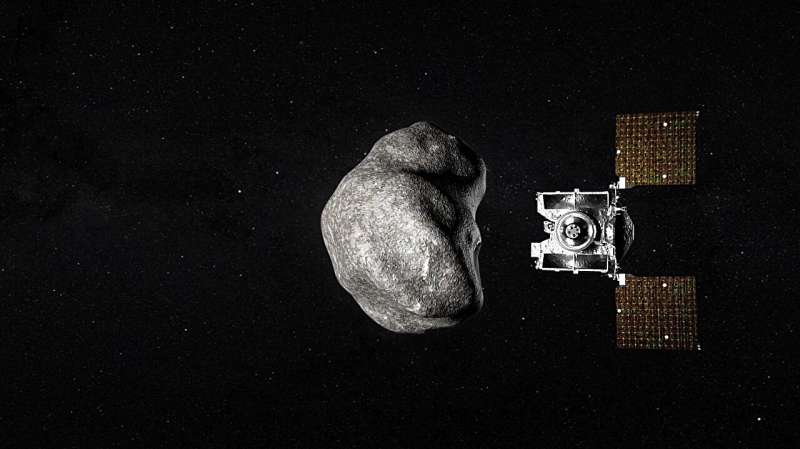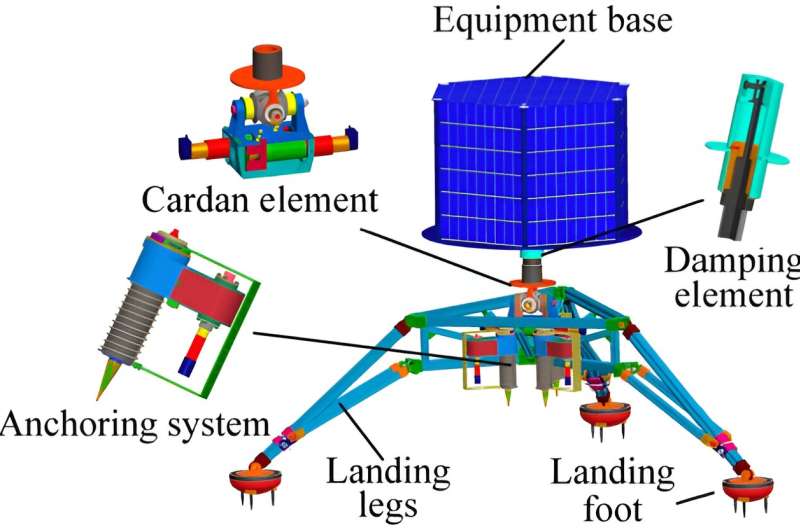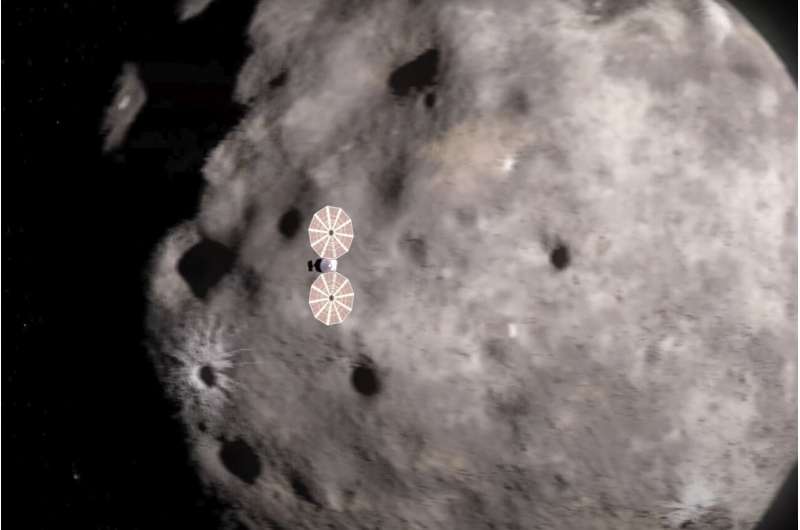
Copernical Team
China places multipurpose satellite into space
 China placed a multipurpose satellite into space on Wednesday morning, according to China Aerospace Science and Technology Corp.
The State-owned space conglomerate said in a news release the Tianhui 5 satellite was transported by a Long March 6A rocket that blasted off at 6:50 am from the Taiyuan Satellite Launch Center in Shanxi province.
Made by the Shanghai Academy of Spaceflight
China placed a multipurpose satellite into space on Wednesday morning, according to China Aerospace Science and Technology Corp.
The State-owned space conglomerate said in a news release the Tianhui 5 satellite was transported by a Long March 6A rocket that blasted off at 6:50 am from the Taiyuan Satellite Launch Center in Shanxi province.
Made by the Shanghai Academy of Spaceflight New scientific experimental samples from China's space station return to Earth
 The fifth batch of scientific experimental samples from China's Tiangong space station has arrived in Beijing, following the return of the Shenzhou XVI crew on Tuesday.
Samples of 19 scientific experiments, weighing around 25 kilograms, were brought back to Earth, including liver cells, protein and nucleic acid, Arabidopsis plants, rice seeds, radiation-resistant microbes and some chemical
The fifth batch of scientific experimental samples from China's Tiangong space station has arrived in Beijing, following the return of the Shenzhou XVI crew on Tuesday.
Samples of 19 scientific experiments, weighing around 25 kilograms, were brought back to Earth, including liver cells, protein and nucleic acid, Arabidopsis plants, rice seeds, radiation-resistant microbes and some chemical NRL ISS Mission seeks new bioinspired materials
 The U.S. Naval Research Laboratory's Melanized Microbes for Multiple Uses in Space Project, or MELSP, will use the International Space Station (ISS) to search for production of melanin variants and other useful biomaterials that can have applications both on Earth and in space. The mission is scheduled to launch in early November 2023.
Melanin is described as a group of biopolymers respons
The U.S. Naval Research Laboratory's Melanized Microbes for Multiple Uses in Space Project, or MELSP, will use the International Space Station (ISS) to search for production of melanin variants and other useful biomaterials that can have applications both on Earth and in space. The mission is scheduled to launch in early November 2023.
Melanin is described as a group of biopolymers respons Mars Climate Sounder data reveals new cloud trends, study shows
 In a groundbreaking collaborative effort, a new study drawing on the collective efforts of citizen scientists has shed light on the intricate patterns of Martian clouds. The research, fueled by contributions from the "Cloudspotting on Mars" project, has now reached a milestone with its acceptance for publication, soon to feature in a special Mars-focused issue of the esteemed journal Icarus.
In a groundbreaking collaborative effort, a new study drawing on the collective efforts of citizen scientists has shed light on the intricate patterns of Martian clouds. The research, fueled by contributions from the "Cloudspotting on Mars" project, has now reached a milestone with its acceptance for publication, soon to feature in a special Mars-focused issue of the esteemed journal Icarus. Estimating depositional timing on Mars using cosmogenic radionuclide data
 As Perseverance continues to wrap up its current activities at Turquoise Bay where it collected a new sample for possible return to Earth, the Mars 2020 team is getting ready for Perseverance to approach the next site in the Margin Unit campaign, a site called Jurabi Point, also known as the "gateway" to Gnaraloo Bay. Here Perseverance will encounter what is known as a "triple junction" between
As Perseverance continues to wrap up its current activities at Turquoise Bay where it collected a new sample for possible return to Earth, the Mars 2020 team is getting ready for Perseverance to approach the next site in the Margin Unit campaign, a site called Jurabi Point, also known as the "gateway" to Gnaraloo Bay. Here Perseverance will encounter what is known as a "triple junction" between Innovative three legged landing system tested for small body exploration
 In an era where the bounds of space exploration are continually being stretched, a team from the Beijing Institute of Spacecraft System Engineering, Harbin Institute of Technology, and Polytechnic University of Milan have made significant strides in the development of landing mechanisms tailored for small celestial bodies. These environments pose unique challenges due to their low gravity and un
In an era where the bounds of space exploration are continually being stretched, a team from the Beijing Institute of Spacecraft System Engineering, Harbin Institute of Technology, and Polytechnic University of Milan have made significant strides in the development of landing mechanisms tailored for small celestial bodies. These environments pose unique challenges due to their low gravity and un Heterogeneity of Earth's mantle may be relics of Moon formation
 An interdisciplinary international research team has recently discovered that a massive anomaly deep within the Earth's interior may be a remnant of the collision about 4.5 billion years ago that formed the Moon.
This research offers important new insights not only into Earth's internal structure but also its long-term evolution and the formation of the inner solar system.
The study,
An interdisciplinary international research team has recently discovered that a massive anomaly deep within the Earth's interior may be a remnant of the collision about 4.5 billion years ago that formed the Moon.
This research offers important new insights not only into Earth's internal structure but also its long-term evolution and the formation of the inner solar system.
The study, OSIRIS-REx flies on as OSIRIS-APEX to explore its second asteroid

After seven years in space and over 4 billion miles traveled, NASA's OSIRIS-REx mission successfully collected and delivered the first U.S. sample from a near-Earth asteroid. Yet, after all this time and travel, the spacecraft will not retire.
Instead, NASA extended the University of Arizona-led mission so that the spacecraft can be used to study another near-Earth asteroid named Apophis. The mission was renamed OSIRIS-APEX, short for OSIRIS-APophis EXplorer. An overview of the mission was published in The Planetary Science Journal.
OSIRIS-REx deputy principal investigator Dani DellaGiustina is now the principal investigator for the OSIRIS-APEX mission.
Twenty minutes after dropping the sample high above Earth's atmosphere on Sept. 24, the spacecraft fired its thrusters to put it on course to rendezvous with Apophis in 5½ years—just after Apophis makes its own close approach to Earth.
Scientists develop a legged small celestial body landing mechanism for landing simulation and experimental test

Landing stably is a precondition for exploring a small celestial body in situ. The surface of a small celestial body frequently has weak gravity and is irregular, and the surface environment is unknown and uncertain. The landing mechanism tends to rebound and turn over, and the landing stability time is long. However, while most landing performance research has focused on lunar landing, there are differences between the surfaces of the moon and Mars.
Therefore, it important to study landing performance in different conditions in order to analyze the landing stability boundary, and to propose reasonable landing suggestions to support China's small celestial body exploration.
In a research article recently published in Space: Science & Technology, researchers from Beijing Institute of Spacecraft System Engineering, Harbin Institute of Technology, and Polytechnic University of Milan have established a simulation model of a landing mechanism under different landing conditions, analyzed the sensitivity of the key parameters affecting the landing performance, and verified correctness of the simulation via experimental tests, which can provide guidance for a landing mechanism to land stably on a small celestial body.
NASA's Lucy spacecraft swoops past first of 10 asteroids on long journey to Jupiter

NASA's Lucy spacecraft on Wednesday encountered the first of 10 asteroids on its long journey to Jupiter.
The spacecraft on Wednesday swooped past the pint-sized Dinkinesh, about 300 million miles (480 million kilometers) away in the main asteroid belt beyond Mars. It was "a quick hello," according to NASA, with the spacecraft zooming by at 10,000 mph (16,000 kph).
Lucy came within 270 miles (435 kilometers) of Dinkinesh, testing its instruments in a dry run for the bigger and more alluring asteroids ahead.

